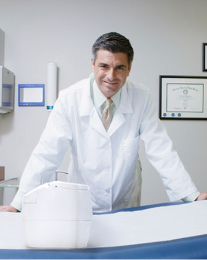Traveling with Oxygen Resources
Traveling with oxygen can seem like a challenge, but once you understand what is required for travel with your oxygen delivery system, it becomes easier each time you do it. To provide you with helpful information, Inogen has curated some travel resources to help you learn more and be as prepared as possible. Read on for informative traveling with oxygen resources.
Air Travel with Oxygen
Airplane travel is the most restrictive when it comes to what you can and cannot bring with you on board, so air travel with oxygen tends to be the most intimidating. However, if you do your homework and communicate with your airline to learn what is and is not permitted on your flight; you should be well prepared for air travel with oxygen.
It is important to understand that compressed oxygen and liquid oxygen tanks are not allowed on airplanes.[1] If you want to know how to travel with oxygen tanks, you will have to find a different mode of travel. However, portable oxygen concentrators are permitted on flights if they meet certain requirements. Your portable oxygen concentrator must be FAA approved,[2] and you should complete several steps to ensure your air travel with oxygen is as easy as possible:
- Call your airline to confirm that your portable oxygen concentrator is approved and ask about any regulations or restrictions regarding bringing your portable oxygen concentrator on board. Some airlines do not allow personal devices to be used and instead require patients to use the airline’s on-board oxygen, so checking first is crucial.
- See your doctor before your flight to get a thorough exam, discuss any possible changes you may require in your supplemental oxygen during travel and get a letter of medical necessity for your supplemental oxygen.
- Be prepared for TSA to ask you to disconnect from your portable oxygen concentrator and, if you cannot disconnect, have proof of that in your letter of medical necessity.
Traveling with Oxygen by Car
It is significantly easier traveling with oxygen by car than by plane. Generally speaking, you can bring whatever oxygen delivery source you use along with you, as long as it fits comfortably and safely in your vehicle. Never store any oxygen delivery system in a car trunk or another tightly enclosed space, and make sure to keep it out of direct sunlight and away from other heat sources. No one should ever smoke near someone using oxygen.[3]
If you are learning how to travel with oxygen tank supplies, it is important to consider the size of your tank and how it will be secured. Oxygen tanks cannot be laid on their sides, so you must ensure that your oxygen tank can be stored securely upright, so it does not topple or roll. It is also essential that you know how much oxygen is in your tank. Since an oxygen tank contains a finite amount of oxygen, it is important to know how long your tank will last at your flow rate. Bring extra tanks to ensure you do not run out.[3]
If you are traveling with an oxygen concentrator, you do not have to worry about running out of oxygen since a powered oxygen concentrator can provide an endless supply of oxygen.[4] You do, however, need to make sure that you can charge your portable oxygen concentrator in the vehicle or that you have enough battery life to last the trip. Bring your charger for your portable oxygen concentrator whenever you leave the house.
Traveling with Oxygen Resources
As you prepare for any trip, it is important to get the right information so you have everything you need. We have compiled these traveling with oxygen resources to help you get ready for your trip.
- American Lung Association (ALA): An interactive infographic offers information when each hotspot is clicked, including information about air travel with oxygen and traveling with oxygen by car, train, bus and cruise ship.
- COPD Foundation: Helpful travel tips for people with COPD and people who need supplemental oxygen traveling with oxygen by car, by plane, by train or by cruise ship.
- Mayo Clinic: Information about why you might need supplemental oxygen on an airplane when oxygen therapy is not usually required, as well as information about how to prepare for air travel with oxygen.
- MedlinePlus: Information about traveling with breathing problems and air travel with oxygen.
- World Health Organization (WHO): Information about traveling with medical conditions and special needs, including supplemental oxygen use.
Inogen Provides Traveling with Oxygen Resources
Inogen believes in helping our customers stay informed, so in addition to the resources above, we offer helpful information about traveling on oxygen therapy. Whether you will be traveling by car, plane, train or cruise ship, we want to provide travel tips and recommendations. If you have further questions about traveling with oxygen resources, contact us today for additional information.
References
- PackSafe Oxygen (compressed or liquid)
- https://www.tsa.gov/travel/security-screening/whatcanibring/items/portable-oxygen-concentrators
- http://web.archive.org/web/20150906001006/http:/www.lung.org/lung-disease/copd/treating-copd/supplemental-oxygen.html
- https://my.clevelandclinic.org/health/treatments/23194-oxygen-therapy
Additional Resources
- https://www.lung.org/lung-health-diseases/lung-procedures-and-tests/oxygen-therapy/traveling-with-oxygen
- https://www.copdfoundation.org/Learn-More/I-am-a-Person-with-COPD/Traveling-with-COPD.aspx
- https://newsnetwork.mayoclinic.org/discussion/mayo-clinic-q-and-a-traveling-with-supplemental-oxygen/
- https://medlineplus.gov/ency/patientinstructions/000066.htm
- https://www.who.int/news-room/questions-and-answers/item/air-travel-advice












